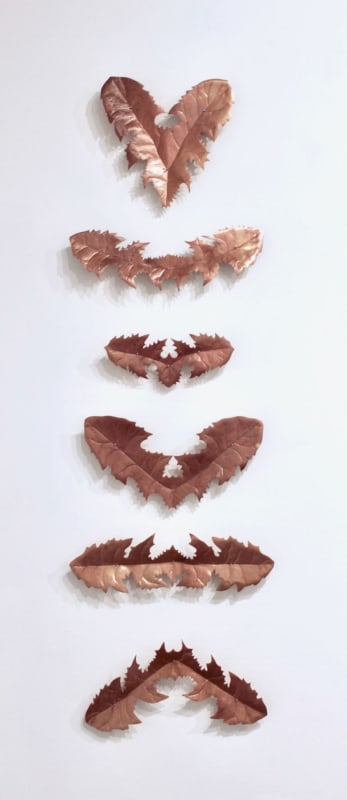Eleanor Harwood Gallery is pleased to present Black Elk Speaks, our third solo show with Kirk Maxson.
Kirk Maxson has been showing in the Bay Area since 1996, garnering praise and recognition for his meticulous metal works. Black Elk Speaks explores narratives of Native American lineage within real and imagined personal histories of Americans. Maxson uses popular culture references of Native Americans as inspiration for titles of the works in the show.
Maxson grew up believing that his maternal Grandfather was part Cherokee, a heritage that his family wholeheartedly embraced. Members of his family registered with the Western Cherokee Nation of Oklahoma. As a child Maxson enjoyed participating in many Native American cultural rights and ceremonies. He accompanied his mother to these events and during his young adulthood sought out his own understanding of his heritage through popular culture sources such as music of Buffy Sainte-Marie and through books, like the nonfiction novel by John G. Neihardt titled “Black Elk Speaks”. As an adult, Maxson sought out information about the culture of Native American groups and their mistreatment as a way to connect to his assumed ancestry. However, it remains unclear if this heritage is one of family lore or of true decent. Maxson embraces both the potential truth and falsehood of his family lore as influences of his understanding of self.
Many Americans share a mythology of a family linked to Native American ancestry. While it is statistically unlikely that as many people as claim Native American roots actually have them, the frequency of Americans claiming such indigenous ancestral relationships is an interesting phenomenon. It likely points to many Americans wanting to a part of the mythology of a pre-colonized country while also absolving oneself of complicity in a variety of colonial horrors. Including themselves in a massacred ancestral lineage serves as a way to disavow the reality of their colonial involvement. This identification gives people the ability to say “this was done to my people” instead of “my family did this”. In many cases both statements are probably true and sheds light on the complexities of self identity. Maxson is exploring imaginary and narrative connection to his heritage by referring to literature and music performed and written by native and non native artists.
His installations are made of metal and depict native and nonnative plant species. The piece, Bury My Heart at Wounded Knee, is an installation of hand sculpted brass Mallow leaves, both a native species to California used as medicines in Native American healing rituals and also an invasive species, drawing a parallel with the colonization of America by non-native peoples.
His titles also reference phrases from presidential speeches with promises made and broken. As Long As the Grass Grows and the Water Flows is a ten foot wide installation of aluminum grass. It refers to a speech by President Monroe. In 1817 he stated that, “As long as water flows, or grass grows upon the earth, or the sun rises to show your pathway, or you kindle your campfires, so long shall you be protected from your present habitations”. In 1828 President Jackson promised the Native Americans they could keep their land, “Which they shall possess as long as grass grows and the water flows….”. The phrase “As long as the grass grows and the water flows…” has come to symbolize broken treaties the United States has had with Native American tribes.

